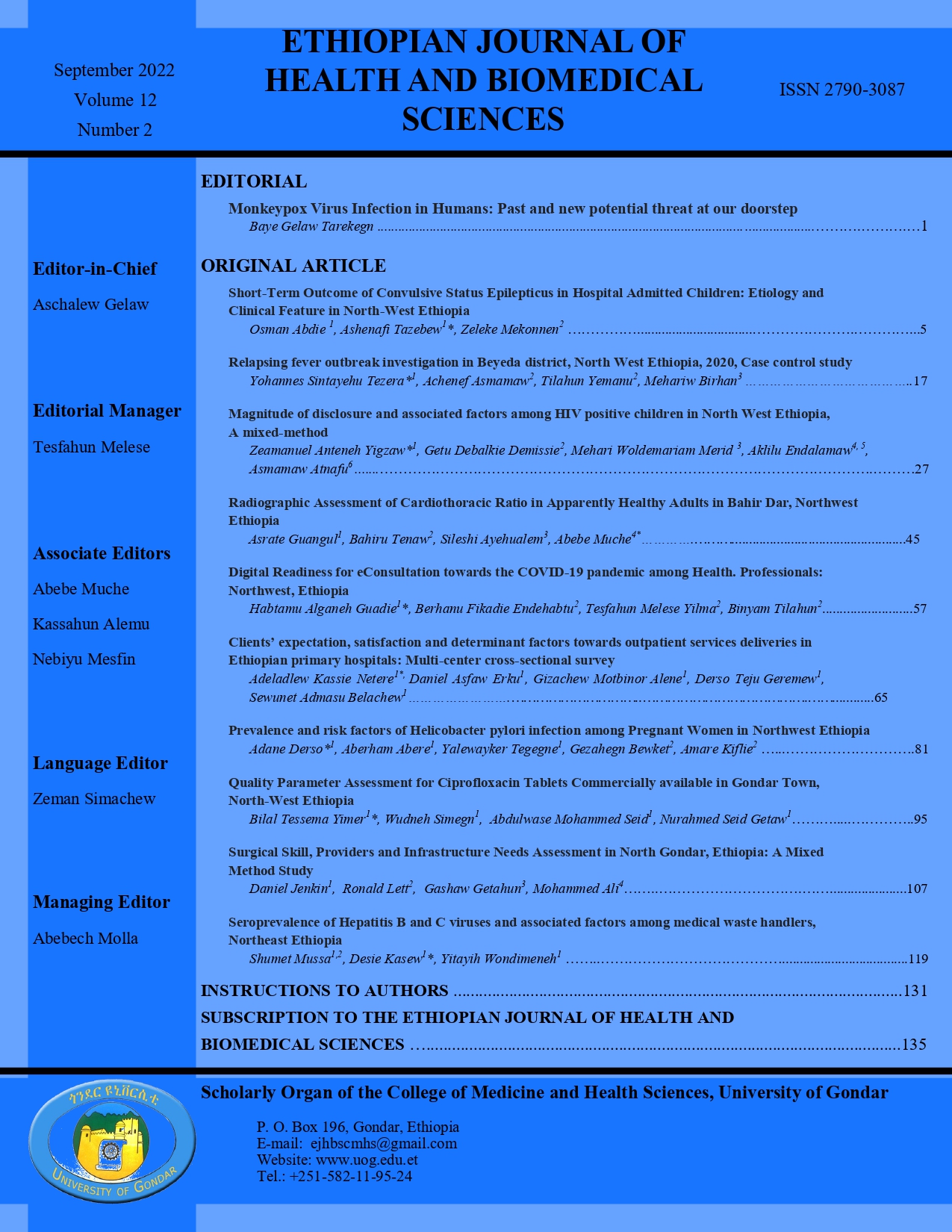Prevalence and risk factors of Helicobacter pylori infection among Pregnant Women in Northwest Ethiopia
DOI:
https://doi.org/10.20372/ejhbs.v12i2.371Abstract
Background: Helicobacter pylori is a gram-negative bacterium that causes chronic gastrointestinal disease and other related disorders in pregnancy. Globally, the disease is prevalent and the burden of infection is paramount in people living with poor socioeconomic conditions. Hence, the present study sought to determine the prevalence and risk factors of H. pylori infection among pregnant women in Northwest Ethiopia.
Method: A facility-based cross-sectional study was conducted from January to March 2020 at the University of Gondar antenatal care clinic. A total of 325 study participants were enrolled using simple random sampling technique. A pre-tested structured questionnaire was employed to collect socio-demographic characteristics, clinical parameters and predisposing risk factors. Five grams of stool specimen were collected from each participant and stored at -20oC until laboratory tests could be carried out. The test used the SD BIOLINE H. pylori Ag Rapid test kit. The data analysis was done via SPSS version 20. Chi-square testing was used to observe the association between variables and logistic regression analysis was also performed to identify potential risk factors. P-value less than 0.05 was taken as statistical significance.
Result: The prevalence of H. pylori was found to be 40.3% (131/325). Helicobacter pylori antigen detection was significantly associated with family size (four and above) (AOR= 11.89; 95% CI = 1.18 to 119.46, P = 0.036), educational status (AOR= 7.48, 95% CI = 2.63 – 21.25, P ≤ 0.001), and gastrointestinal illness (AOR= 4.32; 95% CI = 2.28 to 8.18, P ≤ 0.001).
Conclusion: The present study revealed that the magnitude of H. pylori infection is high among pregnant women. Empowering women with education and improving socioeconomic status is the step ahead for prevention and control of H. pylori infection in the study area.


